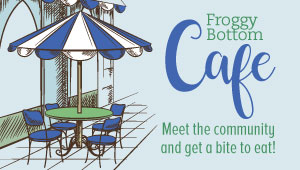I have been keeping my eye on the polls out of Kansas but I did not fully understand their implications until I read this piece by Sam Wang in The New Yorker. I have been looking for signs that the Democrat might grow strong enough in a three-way race to topple incumbent Republican Senator Pat Roberts, who is (along with Republican Governor Sam Brownback) immensely unpopular. Because the independent, Greg Orman, is polling in (a strong) third place, I hadn’t thought much about him except as a potential spoiler. But, it turns out that Greg Orman is dusting Roberts in a two-way poll.
Despite the fact that thirty per cent of voters still have not heard of him, a recent Public Policy Polling survey shows that in a one-on-one matchup, Roberts would lose by ten percentage points, forty-three to thirty-three. In contrast, Roberts would survive a one-on-one matchup with [Democrat Chad] Taylor by a margin of four points. So if you’re Roberts, you either want Taylor and Orman to split the vote, or to run against Taylor alone.
Where does Orman stand ideologically?
Orman, who comes from Olathe, a city in the eastern part of the state with about a hundred twenty-five thousand people, has been crisscrossing Kansas by bus, meeting voters and preaching a message of fiscal restraint and social tolerance. A former Democrat, he decried the gridlock and lack of action in Washington, and now declines to identify himself as a member of either major party.
Well, that doesn’t tell us much, but he isn’t a former Republican, and he is preaching social tolerance in a very socially conservative state. What if the Democratic candidate, Chad Taylor, decided to drop out of the race? Would Greg Orman be able to win the seat? Would he be willing to caucus with the Democrats?
Prof. Wang is a Princeton University neuroscientist who moonlights as a political statistician. He ran this scenario through his computer models and came up with this:
If the [independent senators] and the Democrats win exactly forty-nine seats, Orman would have it in his power to provide—or deny—the critical fiftieth vote to control the chamber. In all the outcomes simulated in my model, this event has an almost thirty per cent probability of happening. Added to the Democrats’ chances of gaining control without Orman, the total probability of combined Democratic and independent control would be eighty-five per cent—a total game-changer.
In plain English, if Orman won the Kansas seat and agreed to caucus with the Democrats, the Democrats chances of maintaining control of the Senate would go up to eighty-five percent.
However, Mr. Orman has already said that he could not support either Harry Reid or Mitch McConnell for majority leader. But could he support Dick Durbin or Chuck Schumer?
With Kansans in a mood to throw out their Christian conservative governor and their high-seniority conservative U.S. Senator, the Republican Party is certainly at a low point in the Sunflower State. However, given a choice when running for reelection in Kansas as an incumbent, most sane people wouldn’t choose to run as a Democrat, or be the one who gave the Democrats control of the Senate. So, Mr. Orman will have a powerful incentive to caucus with the Republicans.
On the other hand, as a former Democrat who is interested in social tolerance, he may be more comfortable caucusing on the left side of the aisle. Maybe Harry Reid doesn’t stand to benefit from this scenario, but if I were him I would be very involved in back channel negotiations with Orman. The same can be said about Chuck Schumer and Dick Durbin, who could stage a coup against Reid with the right kind of deviousness.




